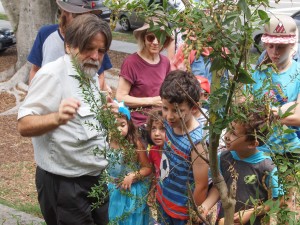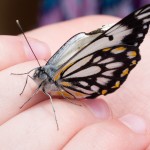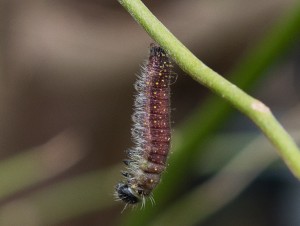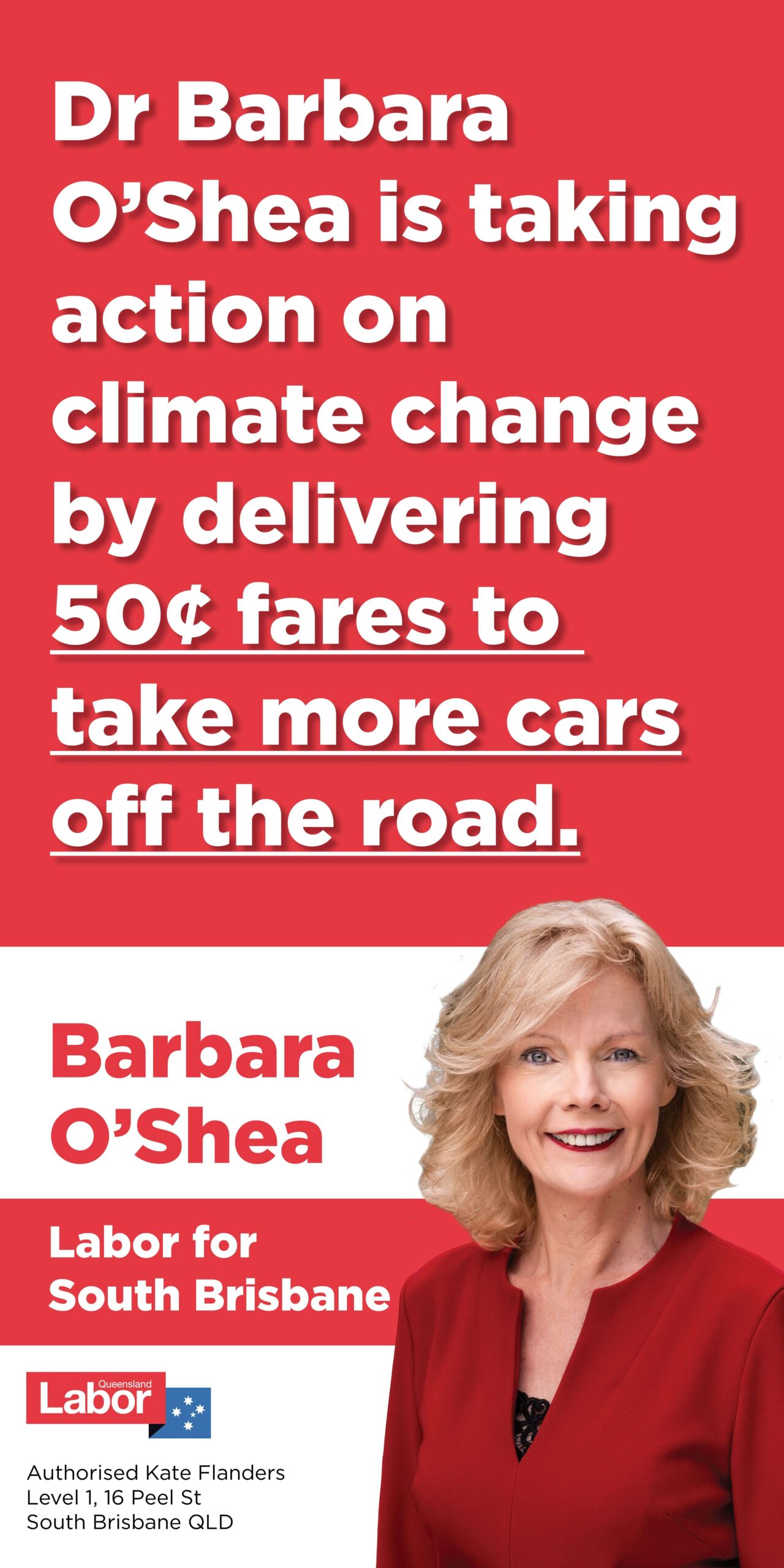The West End Festival offers something for everyone: music, colour, action, and discussion. But for those, like me, who want something quieter and more contemplative, there was also the Butterfly Walk led by West End’s own Butterfly Man, Frank Jordan.
Frank is a knowledgeable guide. He is a co-founder of the Butterfly and Other Invertebrates Club, which held its first meeting at West End State Primary School twenty years ago, and is current president of the Butterfly and Other Invertebrates Club. He has planted a vast range of butterfly host plants at the Paradise Street and Jane Street Gardens. Frank is also co-author of the book “Create More Butterflies: a guide to 48 butterflies and their host-plants for south-east Queensland and northern New South Wales”, which you can borrow from your local library or purchase at Avid Reader.
About twenty of us, including a number of budding young entomologists, joined Frank on Saturday morning, the 29th of October, to learn why we are seeing so many butterflies in our neighbour right now, and what we can do to attract more of them to our homes.
If you have visited Paradise or Jane Street gardens in recent days, you will have seen an abundance of the Caper White butterflies (Belenois java) which ranges in colour from almost completely white with narrow borders, to borders that can cover most of the wings.
It really is a case of the ugly duckling with this butterfly. Its host plant is the native caper (Capparis arborea), but it will also breed on introduced caper trees. The caper trees at Jane and Paradise Streets are currently covered in dusty brow chrysalises and the trees look to be almost dead. However, Frank assured us that the trees will recover and they will keep hosting these butterflies.
I have read that these migrating butterflies can sometimes make it all the way to Southern Australia.
While the Caper White was the species that predominated during our walk, we also observed many other species, including Monarch butterflies (Danaus plexippus) whose host is the toxic Milkweed plant. Frank told us that the name milkweed refers to the plants milky toxic sap which tastes terrible to birds and mammals. A great way for the Monarch butterfly to survive.
Those who have a mandarin or other citrus in their yards, including native citrus, Frank said, may be playing host to the stunning Orchard Swallowtail Butterfly (Papilio Aegeus).
Paradise Street also boasts host plants for the wonderfully named, Pale Triangle (Graphium eurypylus), Blue Triangle (Graphium sarpedon), Yellow Migrant (Catopsilia gorgophone), Meadow Argus (Junonia villida), Speckled Line Blue (Catopyrops florinda) and the Chequered Swallowtail butterflies (Papilio demoleus), to name a few. Over forty butterfly host plants have been established in the garden.
During our walk Frank was asked why butterflies are important. In short, he said, they add to the biodiversity of our landscape by providing a resource for other animals. They are also important pollinators, and of course we can enjoy them for their transient beauty.
“The best way to have a connection with nature in suburbia is to grow a butterfly creating plant and that way you will not only have a connection with the plant world, but also with the world of animals,” Frank Jordan told us.
If you didn’t make it to the walk and you want to learn how to start your own butterfly garden at home, check out the Paradise Street Butterfly page on Facebook, but better still, take a walk in the garden: it’s free and it is a wonderful urban oasis.
All images by Jan Bowman
Updated: 30 October 2016






